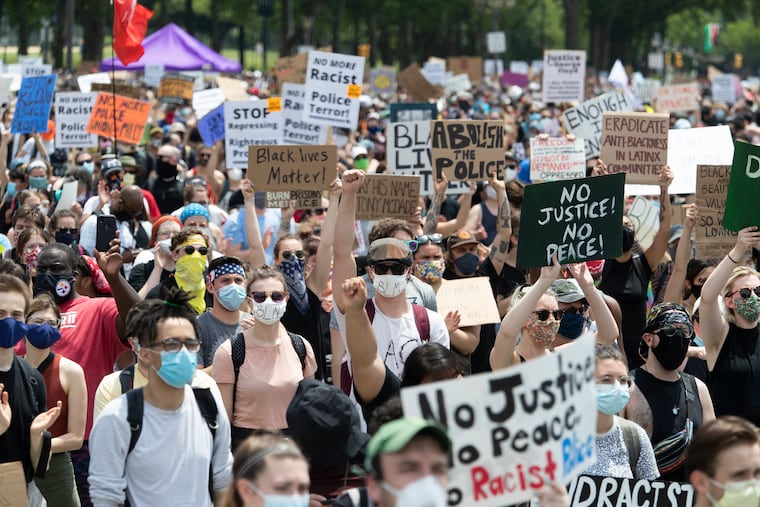Thousands pack Philadelphia streets in peaceful protest to declare that Black Lives Matter; other marches go on around the region
A powerful cry for justice rose from the streets of Philadelphia on Saturday, as thousands marched peacefully across a shut down Center City to demand an end to racism.
